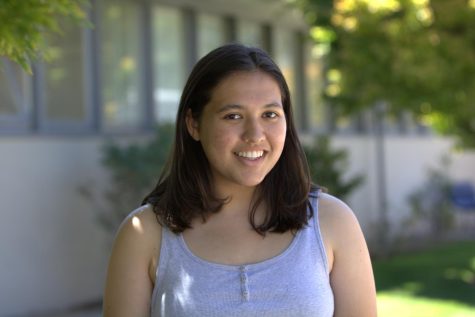Do you really want to be ‘that girl’?
Crossed-out homework assignments in News Editor Anika Sikka’s planner. Anika tried vlogging every single day for about two weeks to showcase her productivity, following a TikTok trend.
I love productivity. Crossing off all the tasks on my planner and cleaning my closet are the most satisfying things in the world. I also love TikTok (no explanation needed there). So, when my two favorite things in the whole world came together and birthed the “that girl” trend, I was obsessed. I had to try it immediately.
The “that girl” trend claims to promote productivity and healthy lifestyles by encouraging people to romanticize their lives and post them on TikTok with extremely aesthetic vlogs of their day-to-day routines.
@virgohabitsnew day, new opportunity. #5amclub #morningroutine #productivity #thatgirl ib:@vanessatiiu♬ y did dis blow up – aotishiko
Like them, I began by vlogging my days in hopes of recording my progress in being “that girl.” I woke up every day at 7:30 a.m, made variations of smoothies and avocado toast for breakfast and started to scrupulously plan my life.
I lasted approximately two weeks. Although I was following all the steps “that girls” recommended to join their ranks, my vlogs and life didn’t turn out as crisp as theirs, and I’ve come to realize why.
To be “that girl” is not just a trend. It’s a lifestyle, one of pretty planners, Lululemon and iced coffee. It encourages people — especially young girls — to “live their best lives” by partaking in constant goal setting and self-reflection (and purchasing those god-awful white Lululemon shorts).
At the surface level, this trend sounds amazing — or at least, much better than teaching children to eat Tide Pods or grass (re: Hank Green’s comment section). Encouraging children to set goals and be healthy sounds like more of what we need on TikTok. But on my journey to transform into “that girl,” I discovered the dark side of the pretty stationery and $20 salads.
The “that girl” trend on TikTok is a feeding ground for negativity.
It gives anonymous faces an excuse to spew toxic expectations onto young girls. Users typecast girls who don’t eat healthy every day or don’t exercise as “gross.” They scrutinize girls with oily skin or hair (typically women of color), calling them terms such as “dirty” or “musty,” and actively exclude young women of color.
Users also categorize girls based on the clothing brands they wear, deeming Lululemon and Brandy Melville as the only acceptable brands. Not only can Lululemon clothing prices veer into the “hundreds of dollars” range, but brands like Brandy Melville also promote unrealistic body standards. One size does not, in fact, fit all.
The “that girl” trend is teaching young girls that only skinny, white, rich girls can be idealized in society. The trend is teaching that girls who don’t fit into that standard aren’t living up to their potential.
Girls who cannot afford $100 leggings or organic salads every meal are now being told that because of these circumstances — of which they have no control — they aren’t worthy of appreciation, which can harm their self-image.
Along with being a classist and materialistic mess, the “that girl” trend is blatantly misogynistic. Only girls are being held to this standard of cleanliness and productivity; I haven’t seen a single man on TikTok be shamed for the oil on his skin or hair, nor have I seen someone openly shame a man for eating at a fast-food restaurant. In fact, this trend is so directed to girls that if a man participated in it, his comment section would not even closely resemble what I see in most girls’ comment sections.
This trend teaches young girls that the only way to be “worthy” is to conform to age-old stereotypes of beauty. Telling girls that they’re not valued unless they’re productive and drink green juices doesn’t help promote goal setting in any way. If anything, it makes them less motivated to make personal goals and more motivated to focus on superficial standards. I found myself worrying more about how certain clips in my vlogs looked rather than the actual work I was doing, which made me less productive.
And sure, being “that girl” added consistency into my routine, but it took away the spice in my life. There’s something so liberating about having a half-eaten cupcake for breakfast as opposed to avocado toast every single day. It’s captivating to stay in your home all day, doing your math homework and watching Netflix.
So, I’m telling you, it’s okay if you’re not “that girl.” Really, it is. You don’t need to wear buttery leggings or eat healthy foods for breakfast all the time. You don’t need to vlog your 6 a.m. workouts and aesthetic planners to flaunt a flawless, productive lifestyle. You don’t need to fit society’s warped ideals of productivity or vlog every aspect of your life — TikTok @user12821_2812’s opinion doesn’t matter.





